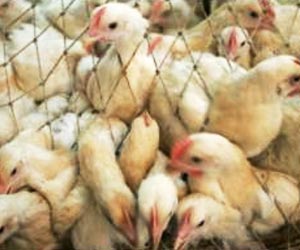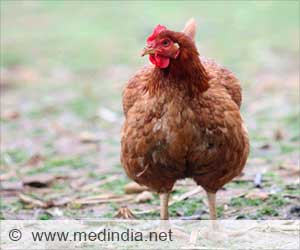UC Irvine researchers have combined genetic and geographic data of the H5N1 avian flu virus to reconstruct its history over the past decade.
UC Irvine researchers have combined genetic and geographic data of the H5N1 avian flu virus to reconstruct its history over the past decade. They found that multiple strains of the virus originated in the Chinese province of Guangdong, and they identified many of the migration routes through which the strains spread regionally and internationally.
By knowing where H5N1 strains develop and migrate, health officials can better limit the spread of the virus by strategically intervening. Local vaccinations can be better administered by using strains from regions that have repeatedly contributed to infections."If you can control the virus at its source, you can control it more efficiently," said Walter Fitch, professor of ecology and evolutionary biology in the School of Biological Sciences at UCI and co-author of the study. "With a road map of where the strain has migrated, you're more likely to isolate the strain that you should be using to make the vaccine."
The study appears this week in the online early edition of the Proceedings of the National Academy of Sciences.
This research offers the first statistical analysis detailing the geographic distribution of influenza A H5N1, the bird flu strain. While previous work informally identified H5N1 strains by location, the UCI analysis is the first to systematically track the migration of H5N1 through its evolutionary history, adding new details that identify the relative importance of the geographic and evolutionary advances the virus makes.
From 192 samples obtained across Eurasia, the UCI team reconstructed the virus's geographic reach and evolution. The analysis shows that Guangdong – home to a large poultry industry – is the source of many H5N1 strains that have spread to other provinces and countries. To the south in nearby Indochina, the strains appear largely limited to dispersal among local areas.
Genetic sequences the scientists analyzed suggest that parallel evolution of different H5N1 strains lets the virus infect and cycle through different host species in a region, regardless of the host or vector species it infects first. This way, the virus can find the right host to spread the infection to the next location. This parallel evolution – the independent evolution of similar traits – enables H5N1 to spread quickly, the scientists believe.
Advertisement
Avian flu has been isolated almost exclusively among bird populations. The H5N1 virus has only sporadically been passed on from a bird host to humans; there is little evidence that the virus can efficiently be passed on from human to human. Although fewer than 300 recorded human cases of this flu have been recorded worldwide, its high mortality rate raises concerns that if the virus mutates to where humans can pass it on, a flu pandemic may occur.
Advertisement
SRM






